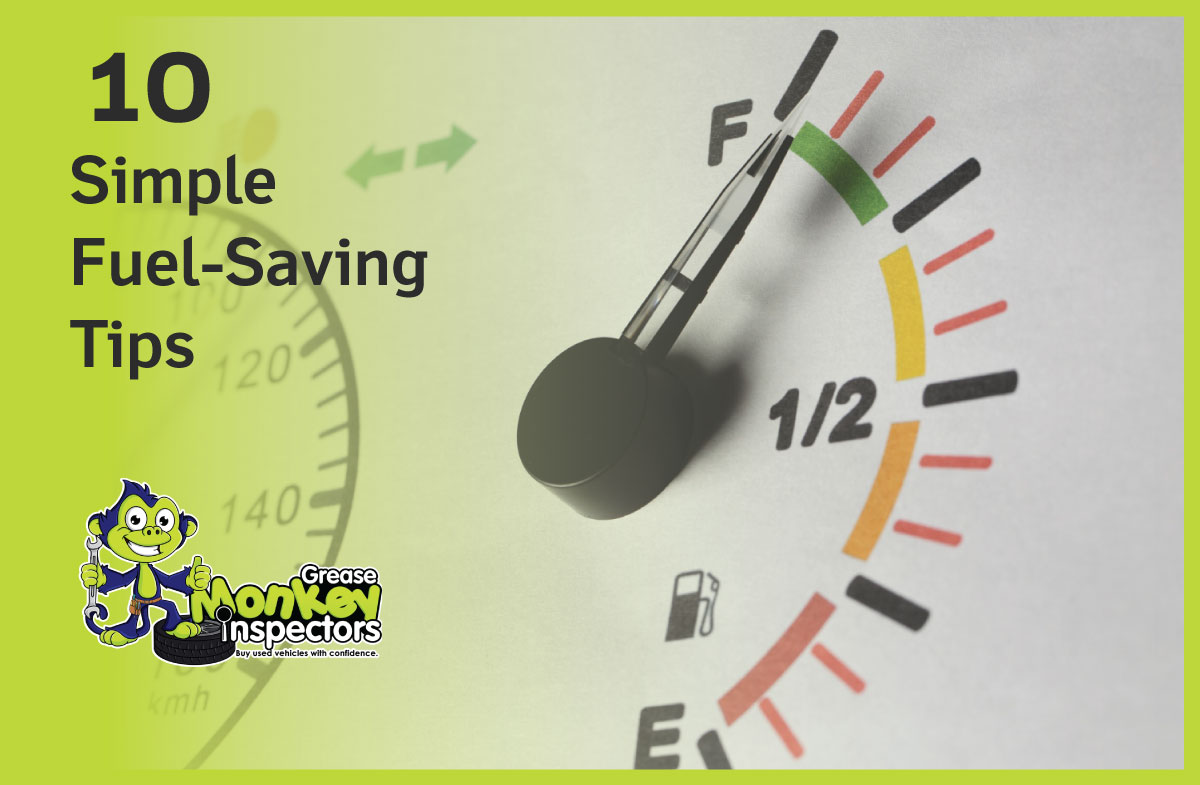Did you know that fuel-efficient driving can save you hundreds of dollars each year and reduce vehicle wear? Additionally, consuming less fuel lowers carbon dioxide emissions, positively impacting the environment. Here are some practical fuel saving tips to help you save money and drive more efficiently.
Check Your Fuel Cap
Ensure your fuel cap is secure. A loose or damaged cap can cause fuel vapor to leak, reducing fuel economy. Tighten the cap until it clicks three times to confirm it’s secure.
Keep Up with Regular Maintenance
Regular maintenance is crucial for optimal vehicle performance. At Greasemonkey Inspectors, we inspect your vehicle for damages, top-up fluids, and recommend necessary repairs. Using the correct engine oil can improve your engine’s efficiency and fuel economy.
Measure Your Tire Pressure
Under-inflated tires increase fuel consumption and cause premature wear. Maintaining proper tire pressure is essential. During our inspections at Greasemonkey Inspectors, we check for unusual tire wear and ensure proper tire pressure levels.
Be Mindful About Braking and Accelerating
Minimize hard braking and quick acceleration to save fuel. Anticipate traffic, read the road ahead, and be aware of pedestrians and other drivers to avoid unnecessary fuel consumption.
Avoid Idling Your Vehicle
Idling wastes fuel. For example, a 3-liter vehicle can waste over a cup of fuel every 10 minutes it idles. If you’re stopped for more than a minute, aside from being in traffic, turn off your engine to save fuel.
Remove Unnecessary Weight
Extra weight in your vehicle requires more power to operate, thus using more fuel. Remove unnecessary items like equipment, salt, and sand to improve fuel efficiency.
Remove Your Roof Rack When Not in Use
A roof rack increases wind resistance, reducing fuel economy. Remove it when not in use to save fuel.
Plan Ahead
Planning your route can save fuel. Avoid construction zones, schedule vehicle maintenance before long trips, and plan your day to avoid high-traffic times.
Use Cruise Control
Cruise control helps maintain a constant speed, reducing fuel use. Use it on highways and keep a safe distance from other vehicles in city traffic to avoid sudden stops.
Don’t Wait Until You’re on Empty
Refuel when your tank is at the halfway point. Waiting until the tank is nearly empty might lead you to the nearest gas station regardless of fuel prices. Use gas-tracking apps, join membership clubs, and research fuel rewards to save on fuel costs.
For professional pre-purchase vehicle inspections, reach Greasemonkey Inspectors. Our experts will ensure your vehicle is in top condition, helping you save on fuel and avoid unexpected repairs. Check out our Inspection Packages for more details.










